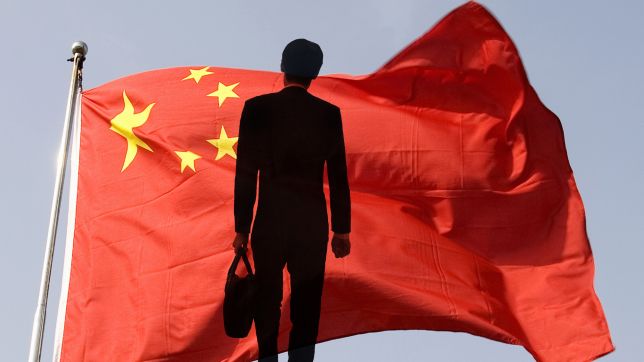Dileepa Fonseka | Tue, 20 Jun 2023

A 29-strong business delegation will accompany Hipkins to China. (Image: Getty)
Things are getting tougher for food and beverage exporters to China, and New Zealand Trade and Enterprise chief executive Peter Chrisp admits it.
Chrisp, who recently returned from a trip to China, remembers the day when NZ products were flying off the shelf just because they bore the NZ brand.
“Ten years ago, because we were from New Zealand, we were preferred as an imported good. And now, you have to really understand that there’s almost a preference for locally produced goods.
“So that is a big shift and again, it’s a shift in consumer sentiment, associated with the rise in nationalism, and the rise of patriotism in that particular market.”
Next week, the prime minister, Chris Hipkins, will travel to China with a 29-person business delegation to meet China’s president Xi Jinping, premier Li Qiang and the chairman of the standing committee of the National People’s Congress Zhao Leji. Hipkins will also give a keynote address at Peking University.
Business will be high on the agenda with trade and export growth minister Damien O’Connor and tourism minister Peeni Henare accompanying him to China and the prime minister set to be a guest at the World Economic Forum’s “Annual Meeting of New Champions” in Tianjin – colloquially referred to as WEF’s “Summer Davos”. He will also host a gala dinner event promoting NZ products and host other events targeted at international education and tourism, in Shanghai.
In a press release announcing the trip, Hipkins signalled the government’s keenness to diversify NZ’s exports to China. The business delegation includes firms with well-known business ties to China like Fonterra, Zespri, Air New Zealand, Les Mills and Silver Fern Farms, but also videogame firms like PikPok and Rocketwerkz.
“The export of traditional goods like dairy, meat and wood to China remains important, but it’s critical we also throw our support behind emerging sectors such as gaming and health and wellness, and the make-up of the delegation reflects our objective of diversifying the breadth of our export offering.”
BusinessDesk will also be travelling to China to cover the prime minister’s week-long trip to Beijing, Shanghai and Tianjin.
Hipkins said China was “a critical part of our economic recovery”, representing nearly a quarter of NZ’s exports, including being the country’s second largest source of tourists pre-covid and a source of international students.
In recent months, voices from both the international education and tourism sectors have expressed their frustration at the slow bounce back post-covid.
At the Trenz tourism conference in May, Air NZ’s general manager for Asia Jonathan Zhang blamed slow visa processing times for hampering the return of tourism from China and Deloitte’s chief economist in China, Xu Sitao, highlighted NZ’s visa processing systems as a key chokepoint for Chinese tourists here too.
“I think right now there’s a pretty big backlog,” Sitao told BusinessDesk in February.
Universities, meanwhile, have partially blamed low international student enrolments for deficits, which are forcing staff cuts at polytechnics and universities around the country, although the University of Auckland’s Chinese enrolments are strong.
For goods exporters, demand from the Chinese market is not bouncing back as strongly, or as quickly, as some expected either.
Got milk?
When it comes to items like dairy it is not just the slower economic recovery at play but the higher levels of domestic production.
Rabobank’s global dairy quarterly said year-on-year dairy imports into China fell by 36% in the first quarter, while domestic milk production grew 8.5% during the same period.
In May, Fonterra issued a press release saying weaker Chinese demand caused a lower forecast for the farmgate milk price for 2022/23. While the co-operative expected demand there to bounce back, it wasn’t sure when this would happen.
A key factor was the stocks of milk powder China already had which were “above normal levels following increased domestic production”, according to Fonterra.
People involved in foreign outreach to China during the 1990s will sometimes regale you with stories of the good old days when NZ products were held in such high esteem that managers of high-end restaurants would loudly trumpet when new stocks of NZ lamb had arrived.
For much of the current century too, a preference for foreign food and beverage products over domestic has persisted in China, partly driven by a distrust of local brands.
However, in the more nationalistic post-covid era the Chinese government has become much more conscious about its own food security.
Chrisp says a cultural tilt towards patriotism and nationalism means Chinese consumers are starting to prefer domestic brands to foreign ones – and not just in food and beverage either – forcing even the strongest international brands to adjust.
“When you walk around China now, and this is different from five years ago, the models are all Chinese and you definitely see a big customisation and a ‘China-fication’ of those international brands to have appeal to a local environment.”
The concerns about food security have an added historic and cultural tinge to them. Hunger and famine have marked the downfall of China’s empires and have cultural significance as a bad omen.
‘Dual circulation’
Between 2000 and 2020 the US-based Council on Foreign Relations (CFR) says China’s food self-sufficiency dropped by nearly 30%, as measured by its food self-sufficiency ratio – the percentage of food consumed domestically compared to the amount produced domestically.
By this measure, China is more dependent on foreign food production than it is on overseas oil. The country has also been a net importer of agricultural products since 2004.
President Xi has been quoted as saying “the rice bowls of the Chinese people must always be held firmly in our own hand and filled mainly with Chinese grain”.
This is where China’s dual circulation strategy comes in, a move which marks a departure from the export-oriented approach the country adopted as it opened up to the world.
The “dual” in dual circulation refers to two circles. In one circle is the Chinese domestic economy – its domestic supply chain and industrial production – in the other is China’s economic relationship with the rest of the world.

Hipkins is keen to diversify NZ’s export offering to China (Image:NZME)
Xi’s focus on “dual circulation” has been interpreted as meaning the Chinese government wants to focus more on growing its economy through boosting domestic consumption rather than pursuing the export-oriented strategy it has chased in years past.
However, Chinese representatives are always quick to point out there are two circles to China’s dual circulation model and the strategy does not mean China is trying to shut itself off from the rest of the world.
In a speech to the United Nations Economic and Social Commission for Asia and the Pacific (UNESCAP) in 2020, China’s permanent representative to the UNESCAP Ke Yousheng said China recognised isolation eventually leads to “backwardness”.
“The allegation that China aims at closing the door to the world and practicing self-isolation by ‘focusing on the domestic economic circulation’ is an utter misinterpretation.
“The new development pattern is by no means an enclosed domestic economic circulation, but an open one in which domestic circulation operates in tandem with international circulation.
“History has proved time and again that opening up brings progress while closure inevitably leads to backwardness.”
China to remain a strong market, NZTE
The outer circle is what Chrisp draws on when he says China will remain a strong market for NZ food and beverage products for as far out into the future as he can forecast.
“This has been a good strong market for NZ and it will continue to be a good strong market for NZ in the future.
“The heart of that will be in the food and beverage, particularly the mature food and beverage.”
Chrisp points to Fonterra’s five “application centres”, and the co-operative’s beverage innovation centre, where Fonterra shows off its products, creates an experience around them and tests them against the Chinese palate.
When Chrisp visited one of them during his trip, Fonterra was running a cream cheese experiment with Chinese chefs, trying to tweak the flavour so it better met Chinese tastes.
“Just to sort of ‘sell and run’ is probably not the go. I think we’ve got to be prepared to really work hard to customise to that particular market, understand where that Chinese consumer is going and stay with that consumer.”
Far from a break from the norm, Chrisp likens China’s tilt towards encouraging more domestic consumption of goods to trends you see in other markets around the world.
“If you go to France … it’s not a great advert to say ‘I’m coming from New Zealand’ in fact some supermarkets in France. Everything in that supermarket is sourced within 200 kilometres.
“Localisation is a big trend all across the world, so there’s nothing particularly Chinese about this trend.
“But there is a sense as a market grows and matures and individualises and it localises, people will like to source locally if they can.”
Amidst China’s “dual circulation” strategy, and a trend towards protectionism worldwide, Hipkins and the business delegation which accompanies him will likely want to make sure there is still a place for NZ’s traditional exports too.

